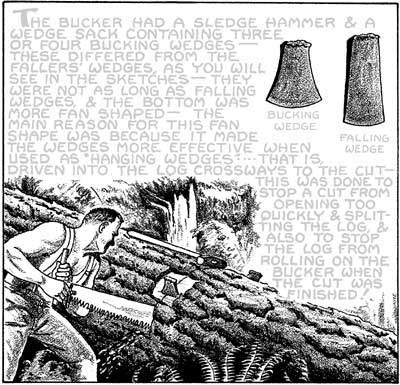If you had taken your time to read what I said, it's already been said & you don't have to go too far back to read it either. The reasons for why this method has been pushed by the trainers hasn't yet been explained, but I'd be saying that it is a safety aspect, which is front & foremost these days & the sacrifice of a little time to achieve it is the price industry has to pay to reduce accidents, workers comp payments & industry deaths. Our logging industry 30 years ago was full of hillbilly cutters killing themselves hand over fist, then they gradually changed the industrial laws, so that now if anybody is negligent in their duty of care they can be sued for millions in a common law court for negligence, that goes from the land owner up the chain to the owners of the mill, that's why they implement training programs to cover their arses, but they still want the job done cheaper every year which is a total contradiction & the only way around to make money is mechanisation, or the people doing the job will have to take shortcuts, from what I can see some are defending the later.
But back to the question, it's safer because the wedge has less chance of bouncing or skewing out of where it's being driven into, plastic on plastic only has 1/2 the resistance of bouncing out of the cut as one with timber friction on each face & the incline of the slope is double that of a single wedge which isn't working in the favour of stopping a wedge bouncing out. If wedges bounce out there is more chance of the hinge breaking when the tree sits back down with force, which leads to a Faller being caught by a tree going the wrong way with no escape route, not all fallers may back up their doubled up wedges to prevent this happening or had a few close calls to learn what to do from a near miss. Statistically 1 in 2 million minor incidents will cause a fatality in the building industry, forestry is probably twice as dangerous as that at least.
Thansk

























































